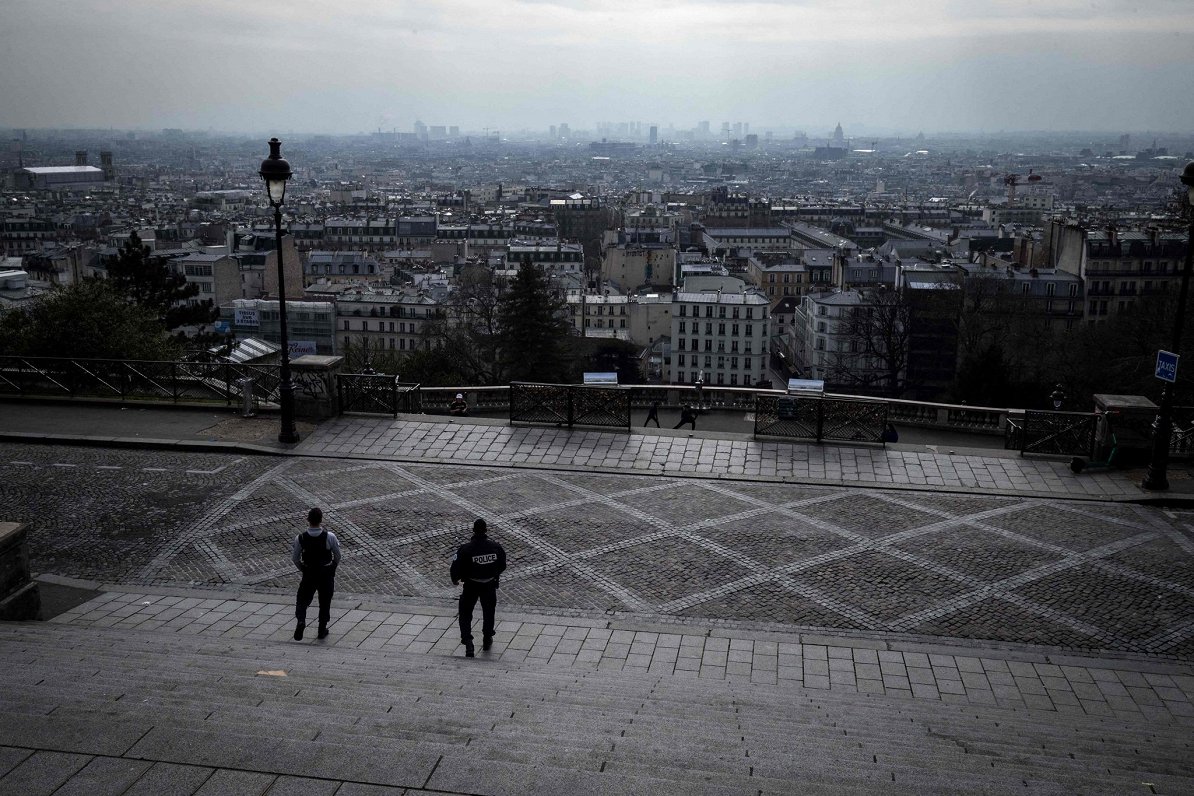Are they invisible to the mortality linked to Covid-19 in France? In July 2020, INSEE published a study concluding that, among people born abroad, the increase in deaths was twice as high as among those born in France. Access to the file of deceased persons, open to the public, now allows us to confirm this sad observation over the whole of 2020. The phenomenon is particularly important in Ile-de-France, strongly affected by the epidemic and where the proportion of populations with an immigrant background is high. Researchers and health specialists give us the keys to explain it.
Especially during the first wave
In 2020, in France, 674,623 people were entered in the file of deceased persons, made public by INSEE. This is 53,109 people more than the previous year, according to figures published in February 2021. That is an excess mortality of 8.5%. Among those born in France, it is 7.7%, while it climbs to 14.9% among those born abroad. Or almost double.
“This excess mortality is not only linked to Covid-19” immediately tells us Sylvie Le Minez, head of the demographic and social studies unit at INSEE. It can be linked to other untreated pathologies. Conversely, “the protective effect of confinement – accidents, reduction of other infections – also saved lives,” she says. That said, “the excess mortality of people born abroad is real, and particularly strong in Ile-de-France”.
Hit hard by the first wave, the capital region is also an important land of immigration. It is also a very densely populated region, where the prevalence of cramped and over-occupied housing favors contamination. As confirmed by an EpiCov study, published by INSERM and DREES in October 2020, living in a densely populated municipality exposes you twice as much. Likewise in a so-called “priority” district.
READ ALSO>
“People born abroad live in smaller housing and more essential jobs than others. They cannot therefore telework and were found to be more exposed during the first wave, and therefore probably during the various waves of the epidemic and the periods of confinement, ”adds Sylvie Le Minez, from INSEE.
Often more complicated comorbidities and care pathways
Author of a study dedicated to excess mortality observed in Seine-Saint-Denis, Patrick Simon, sociodemographer at INED, traces other avenues of explanation, particularly health. “At the same age, the health status of immigrants is generally worse. Diabetes, worsening in the event of Covid-19, is more common, ”observes the researcher.
The medical desertification of priority neighborhoods and the low social coverage of the poorest populations also seem to have an impact on the use of the healthcare system. “Some people are less inclined to go to consult quickly,” explains Patrick Simon.
In a long testimony published on the CNRS website in May 2020, doctors from the Avicenne hospital in Bobigny (Seine-Saint-Denis) were already observing this trend. Used to welcoming many patients of African origin, they were struck by their absence at the start of the epidemic. “We mainly welcomed into the service patients of Caucasian origin – white – over the age of 60,” they recall. “The result is arrivals that are too late in the treatment process, and therefore cases that are more difficult to treat. Many died for lack of sufficiently anticipated support ”, concludes Patrick Simon.
Communicate before and during the treatment process
“The language barrier, total or partial, plays a role before and during consultations,” adds the researcher. Faced with the urgency of the first wave, the doctors of Avicenna, experienced in welcoming audiences of all origins, put aside the translations normally put in place to speak to their patients. “We were focused on pure medical care,” they said.
READ ALSO> Covid-19: the little-known action of health authorities with immigrant populations
A cruising speed was found, the practitioners were able to improve their capacity for dialogue with all of their patients. “We used telephone interpreters to give explanations to patients in Bengali or Bambara,” they still said at the time.
Before the hospital box, the question of information, awareness and taking into account of messages arises. “People born abroad, overrepresented in my department, are far from information channels and have less opportunity to learn about health instructions, with the additional difficulties related to language”, points Stéphane Troussel, president of the Seine-Saint-Denis departmental council. “Exposure to information, both official and journalistic, is a fundamental subject,” recalls Patrick Simon.
Job insecurity in question
In the spring, the whole of France did not stop and not all the working people had the opportunity to continue their activity behind a screen. Butchers, drivers, masons… many professionals engaged in so-called “essential” activities continued to work as before, despite the circulation of the virus. However, in Seine-Saint-Denis, “immigrants are largely over-represented among workers and employees of the department (respectively 57% and 39%, compared to a national average of 20% and 27%)”, recalls the INED , adding that public transport is also used more there than elsewhere.
A hypothesis, however, qualified by the EpiCov study, published in October, and showing that healthcare workers are the only professional category really overexposed to the virus, far ahead of so-called “essential” or “non-essential” professionals.
Newsletter The essentials of the morning
A tour of the news to start the day
—
In other countries, several media have also reported that working poor, often immigrants, have found themselves on the front lines of the virus. In the United States, work has shown that the African-American community is over-represented among the victims of Covid-19. In the opinion of doctors, this is mainly explained by social and health inequalities.
–


